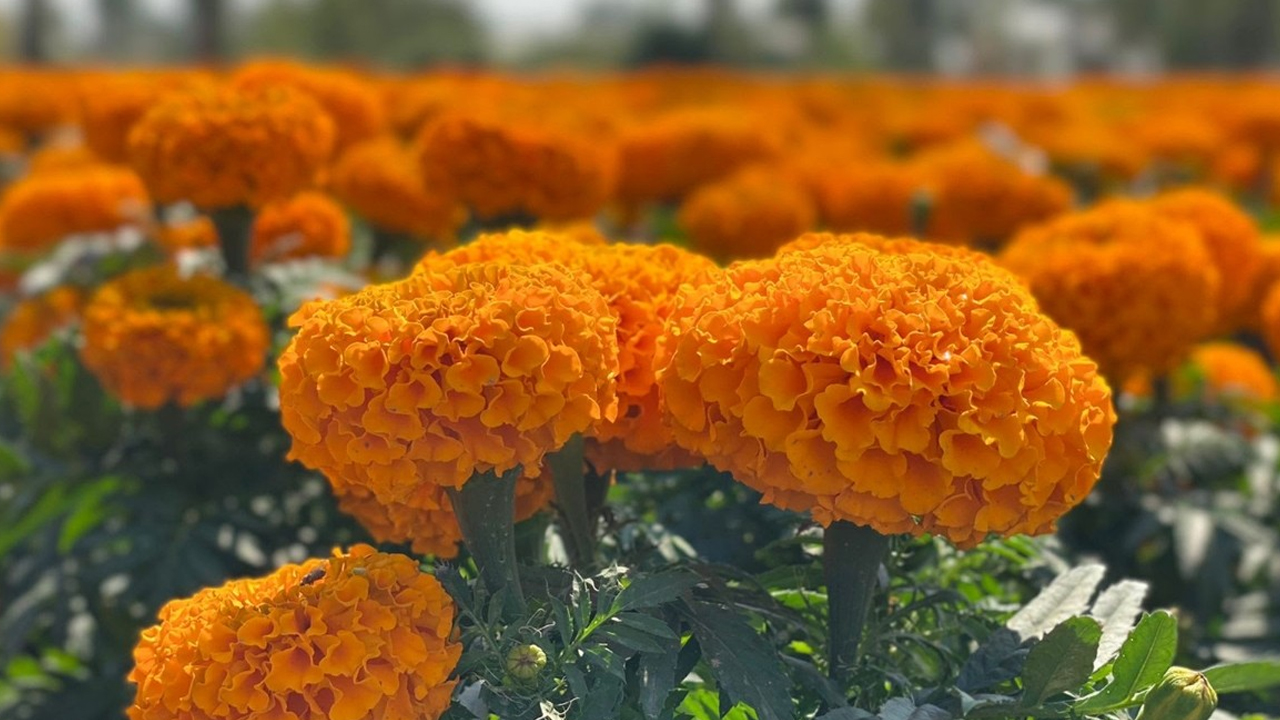Cempasúchil flowers in CDMX
Paseo de la Reforma, Viaduct, Chapultepec, and other avenues will be decorated for the Day of the Dead by 219 thousands of cempasúchil flowers.
The main road artery of Mexico City, Paseo de la Reforma, is beginning to fill with marigold flowers for the Day of the Dead season.
If you pass through the area in these days, don’t miss the photo opportunity.
The responsible authority, the Secretariat of Works and Services (SOBSE), is already working on planting 219 thousand specimens of this emblematic orange flower on the medians of some of the capital’s main avenues. In addition to the aforementioned Reforma, Periférico, Miramontes, Calzada del Hueso, Río Becerra, Viaducto Miguel Alemán, Tlalpan, Coapa, Eje 6 Sur, Javier Rojo Gómez, Chapultepec, Circuito Interior, Eje 3 Oriente, Ejército Nacional, La Viga, Recreo, and Calzada México Tenochtitlán will also be filled with color.
Through an official statement, SOBSE shared all the details about this decoration. In total, 38.66 kilometers of green areas will be intervened to receive the tradition and, more importantly, our deceased loved ones on the nights of November 1st and 2nd.
Where do the cempasúchil flowers that will cover Mexico City come from?
As every year, Xochimilco is crowned as the main producer of marigolds in the region. All the flowerpots used in the arrangements will come from these crops. The intention is also to promote local commerce.
What does cempasúchil symbolize within the Mexican Day of the Dead tradition?
This specimen, also known as the “flower of the dead,” cannot be missing from the offerings, altars, and even graves. Mexicans believe that its bright orange color and distinctive scent serve as a guide for our departed loved ones to visit us during these days. Similarly, it is believed that its use is a way to show respect for those loved ones who have transcended to another plane.
In the vibrant tapestry of Mexican culture, the Day of the Dead, or Día de los Muertos, stands as a colorful and heartfelt celebration of life and death. At the heart of this rich tradition is the cempasúchil, a bright orange marigold flower that holds deep cultural and symbolic significance.
The Cempasúchil Flower
Cempasúchil, scientifically known as Tagetes erecta, is a species of marigold native to Mexico and Central America. Its name is derived from the Nahuatl word “cempohualxochitl,” which roughly translates to “twenty flowers,” possibly referencing the numerous petals of the flower. With its vibrant, golden-orange hue and a distinctive, aromatic scent, cempasúchil has become a symbol of Mexican identity, tradition, and spirituality.
The tradition’s origins
The use of cempasúchil in the Day of the Dead tradition has deep roots in Mexican history, dating back to the pre-Columbian era. The Aztecs, who inhabited ancient Mexico, revered the flower and considered it sacred. They believed that the vibrant color and scent of the cempasúchil could guide the spirits of the deceased back to the world of the living during the Dia de los Muertos festivities.
When the Spanish conquistadors arrived in Mexico in the 16th century, they encountered a rich tapestry of indigenous traditions, including the use of cempasúchil in honoring the dead. Recognizing the importance of these traditions, the Spanish fused them with their own Catholic traditions, resulting in the unique and syncretic celebration that we now know as Dia de los Muertos.
The role of Cempasúchil in Dia de los Muertos
During Dia de los Muertos, cempasúchil flowers play a central role in the colorful ofrendas, or altars, that are constructed in homes, cemeteries, and public spaces across Mexico. These ofrendas are dedicated to deceased loved ones and are laden with their favorite foods, drinks, and mementos. Cempasúchil petals are often spread in vibrant paths leading to the ofrendas, symbolizing the way for the spirits to return to the world of the living.
In addition to their use in ofrendas, cempasúchil flowers are often fashioned into intricate garlands, wreaths, and crosses, adorning cemeteries and gravesites. The striking contrast of the marigold’s bright color against the darkness of the night creates a visually captivating and emotionally resonant tribute to the departed.
The cultural significance
Cempasúchil embodies the Mexican people’s unique blend of spirituality, reverence for tradition, and resilience in the face of mortality. It serves as a bridge between the realms of the living and the dead, a vibrant symbol of remembrance, and a testament to the enduring power of culture.
The cempasúchil flower is more than just a botanical marvel; it is a living testament to Mexico’s cultural heritage and the enduring spirit of Dia de los Muertos. This brilliant marigold, with its vibrant color and profound symbolism, continues to weave a connection between generations, offering a poignant reminder that, in Mexican culture, death is not an end but a celebration of life. The cempasúchil flower is a living embodiment of this timeless tradition, and its golden petals will continue to pave the way for the spirits of the departed to return, year after year, to the embrace of their loved ones.

